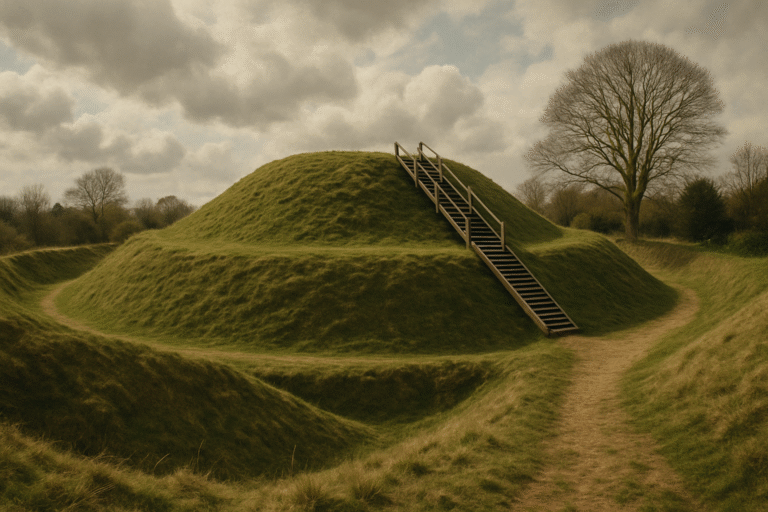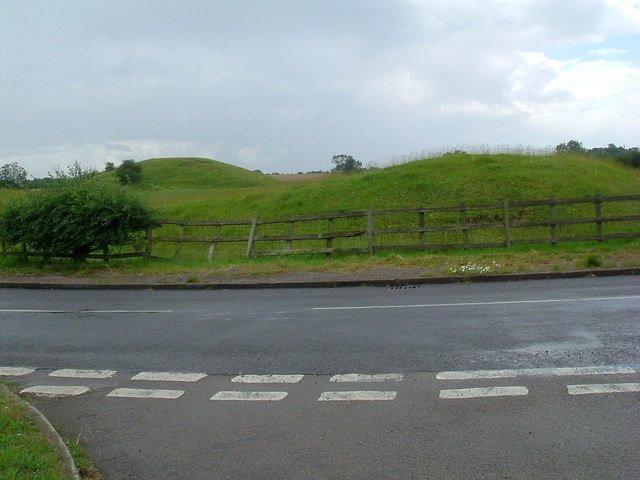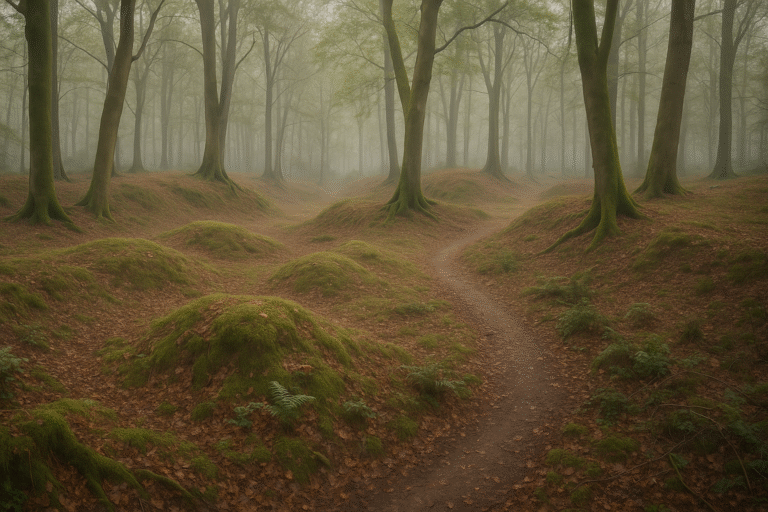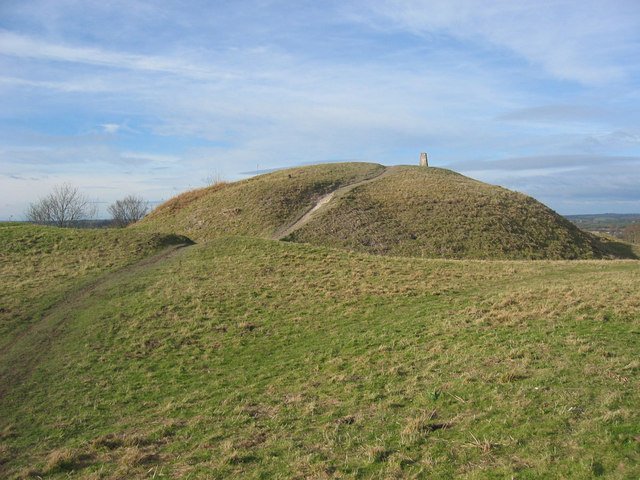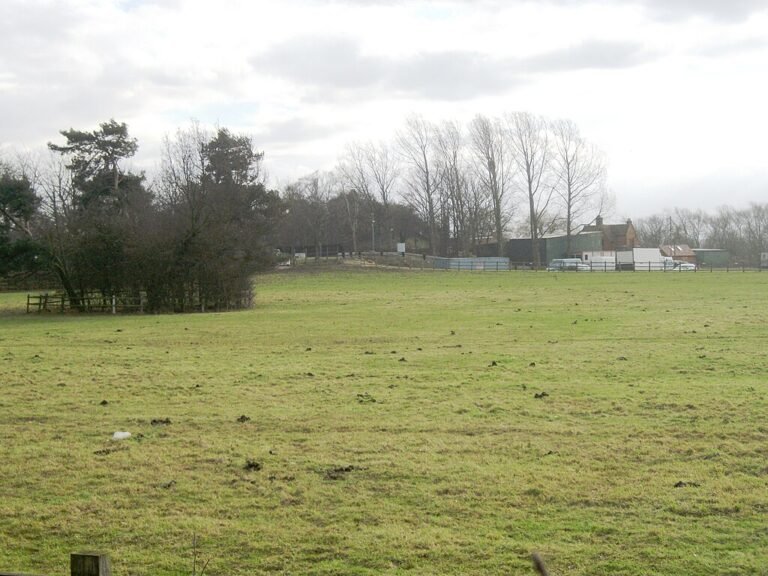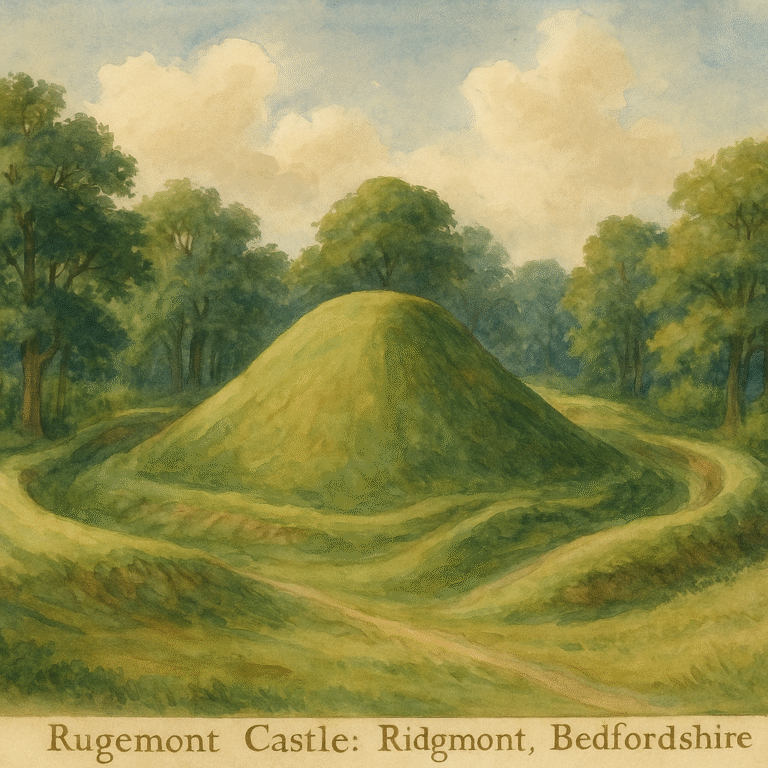Thurleigh Castle: Hidden Heritage in Bedfordshire
Thurleigh Castle: A Glimpse on the Horizon
Thurleigh Castle: Tucked away beside the charming village of Thurleigh in north Bedfordshire, Thurleigh Castle – officially Bury Hill Camp – is a medieval motte-and-bailey site now reduced to impressive earthworks. Its gently conical mound and expansive bailey hint at a past of defensive significance, quietly anchoring one of the village’s defining historic features.
Thurleigh Castle: History and Significance
Origins & Layout
Constructed around the mid-12th century, possibly during the reign of King Stephen (1135−1154), Thurleigh Castle formed part of a defensive network across the upper Ouse valley. The site includes a substantial motte: an oval mound rising from broad ditches, topped by a two-level platform that likely housed a wooden keep. The bailey, unusually large and irregular, lies to the south.
Archaeology Over Millennia
Excavations in the 1970s revealed little of the castle’s Norman structures, but did unearth evidence of earlier occupation spanning the Iron Age, Roman and Saxon periods, suggesting Thurleigh has long been a site of significance.
Protected Heritage
Today, Thurleigh Castle is a Scheduled Monument, ensuring its earthworks remain safeguarded by law.
Thurleigh Castle: Facts & Figures
| Feature | Details |
|---|---|
| Motte Size | Approx. 60m × 40m base; 40m × 20m summit |
| Bailey Dimensions | Roughly 200m × 270m |
| Defences | Ditches 7 m wide and up to 3 m deep; bank about 1.5 m high |
| Era | Built c. 1135–1154; fell into disuse by the late 13th century |
| Nearby Features | East of St Peter’s Church (c. 1150); former RAF airfield & village amenities nearby |
Visiting Today – Practical Travel Tips
Getting There
Located about 5 miles north of Bedford, Thurleigh is reachable by car or public transport via local roads branching off the A6 or B660. There is no car park at the motte itself; street-side or village centre parking would be most convenient.
What to Expect
What you’ll see today are earthwork remains, only no standing structures remain. The site lies adjacent to historic St Peter’s Church, itself dating to around 1150.
Accessibility & Photography
The terrain is grassy and uneven; sturdy footwear is advised. Photography is best at different angles to highlight the motte’s layered form, the ditch, and the backdrop of the church and surrounding farmland.
Best Time to Visit
Spring and summer offer lush greenery and longer daylight; autumn brings rich tones and quiet charm. Weekdays and drier weather provide ideal walking conditions.
On-site Highlights & Nearby Gems
- St Peter’s Church – Norman origins, Grade II* listed, just beside the motte.
- RAF Thurleigh / Bedford Autodrome – Former WWII airfield now home to a motorsports venue. A memorial here honours the USAAF presence.
- Local Countryside – Rolling arable land, quiet lanes, and pastoral views ideal for gentle walking or exploring nearby ends like Cross End or Church End.
Suggested Itineraries
1‑Day Outing: Local Heritage Loop
- Morning: Arrive in Thurleigh village. Visit St Peter’s Church and wander to the motte.
- Midday: Picnic near the church or stop by a village spot (pub or café if open).
- Afternoon: Visit the RAF memorial or take a countryside walk through adjacent hamlets (e.g. Park End, Cross End). Conclude with a drive by the former airfield site.
Time estimate: ~3–4 hours, with walking and reflective pauses.
2‑3 Day Regional Castles & Countryside Trail
Day 1: Thurleigh – motte, church, countryside strolls.
Day 2: Head to Bedford – visit the Riverside, Panacea Museum, or nearby Woburn Abbey (grand stately home in Bedfordshire).
Day 3: Explore Olney (poetic ties to “Amazing Grace”), Ampthill, or Houghton House for variety and historic richness.
Places to Eat & Stay Nearby
Eating
Thurleigh itself is small, so options are limited – best to plan for Bedford for cafes, pubs and village eateries. Alternatively, pack a picnic to enjoy beside the motte or churchyard.
Staying
Bedford offers a mix of budget and mid-range accommodation: B&Bs, inns, or chains close to the town centre. Consider small rural guesthouses or holiday cottages in villages like Bolnhurst or Old Warden for a peaceful stay.
Seasonal Events & Special Moments
- Church Services and Seasonal Decoration – St Peter’s Church may feature seasonal events or flower displays.
- Wildflower & Birdwatching – Spring brings new shoots on the motte; wildlife may be visible across the fields.
- Evening Light – Visit at dusk in summer for evocative lighting and pastoral quiet that enhances the earthwork’s silhouette.
Broader UK Travel Themes & Comparisons
Thurleigh Castle is a quiet example of Norman defensive design, part of an early network of motte-and-bailey castles across England. While modest compared to stone-built fortresses, its preserved earthwork offers insight into medieval settlement and landscape shaping.
For enthusiasts of heritage and hidden gems:
- Visit other Bedfordshire motte sites, or head to Bedford Castle ruins for a broader context.
- Compare with more elaborate sites like Woburn Abbey, from fortified mound to grand country house.
- Incorporate film and food trails, Olney’s literary link to Amazing Grace, or a “RAF heritage loop” with WW2 airfield stories and motte walks.
Why Thurleigh Castle Matters
Thurleigh Castle may not dominate tourism headlines, but its subtlety is precisely its strength. It invites you to explore layers of history from prehistoric occupation through medieval fortification, into wartime legacy and serene modern rural life. It rewards visitors who seek thoughtful discovery, appreciate the quiet presence of heritage, and enjoy the tapestry of stories woven into the Bedfordshire landscape.
FAQs: Thurleigh Castle
What is Thurleigh Castle?
Thurleigh Castle is the site of a medieval earthwork castle, also known as a motte-and-bailey castle. The castle was originally a timber fortification built on a man-made mound of earth (the motte) with a surrounding bailey. Today, only the earthworks remain, with the most prominent feature being the large, grassy mound.
Where is it located?
The castle site is located in the village of Thurleigh in northern Bedfordshire, England. It is situated on a low rise near the village church, making it a well-known local landmark.
What is its historical significance?
Thurleigh Castle was likely constructed during the 11th or 12th century, following the Norman Conquest, to establish control over the local manor. It served as a strategic military outpost for the local Norman lord. Its location near the medieval church suggests a close link between the castle’s secular power and the ecclesiastical authority of the time.
What can I expect to see when I visit?
The main feature you will see is a large, conical mound that is the motte of the original castle. On top of the mound, a single large tree often stands as a distinctive landmark. You can also trace the remains of the ditches and the bailey area, which would have once contained the castle’s courtyard and other buildings.
Is the site open to the public?
Yes, the castle earthworks are a scheduled ancient monument and are generally accessible to the public. It is a popular spot for walkers and those interested in local history. As with all historical sites, visitors are asked to respect the monument and the surrounding area.

